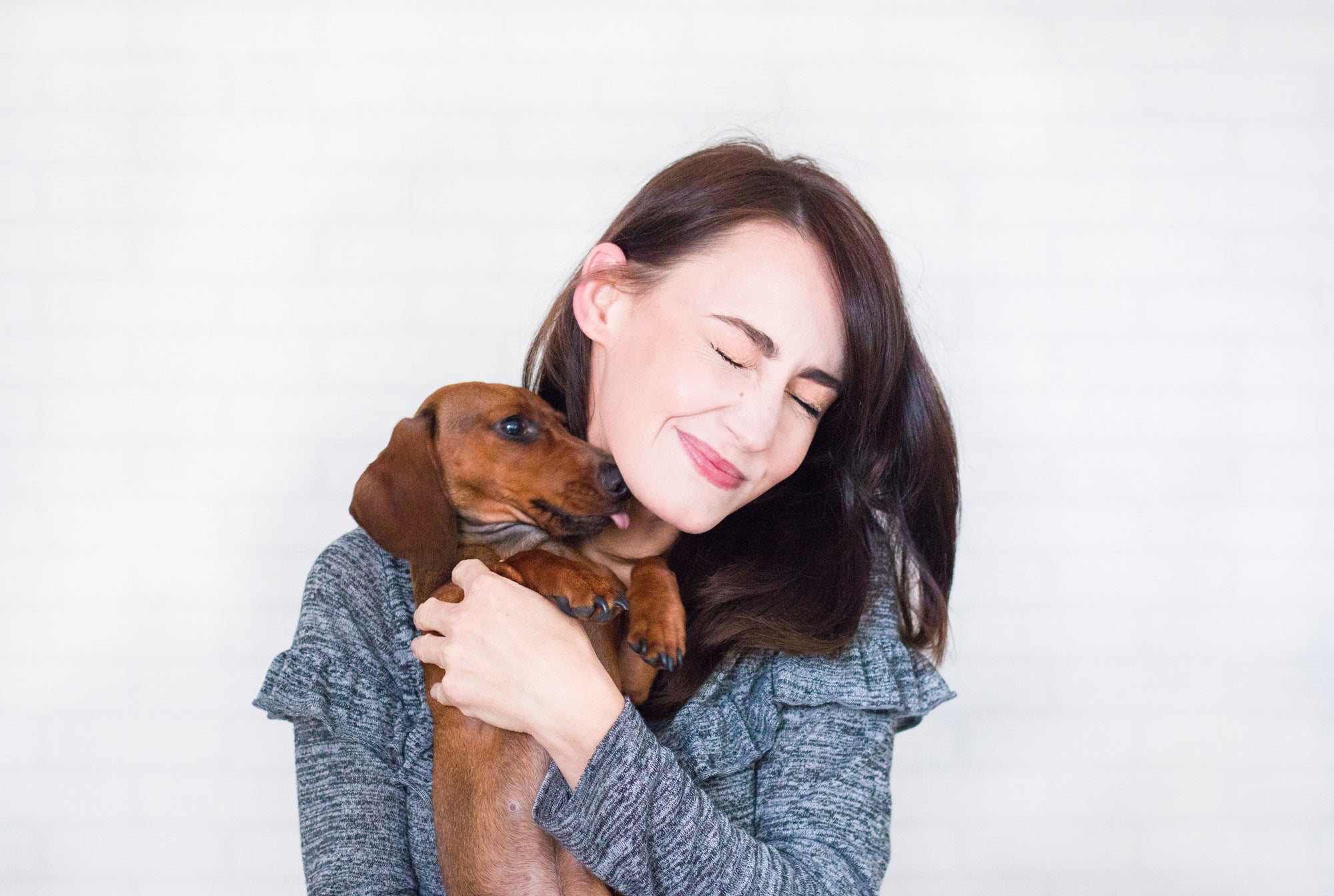Dog behavior problems can be frustrating. But it's important to understand why dogs behave badly in order to minimize unwanted behaviors.
In this post we'll highlight 3 of the most common dog behavior problems, explore the reasons behind them, and give you some practical tips for effectively preventing them.
1) Hyperactivity
Lots of dogs seem to spend their lives racing around. They're full of energy, and it can be difficult to calm them down. But you may be surprised to learn that hyperactivity is actually considered to be quite rare in dogs. In an article for Mercola Healthy Pets, Dr. Karen Becker, DVM., NMD., explains:
"Veterinarians generally agree that most symptoms of hyperactivity as described by the dogs' owners, upon closer inspection are the result of breed characteristics, conditioned behavior, lack of appropriate physical and mental stimulation, or a combination."
Symptoms of hyperactivity such as inability to focus, restlessness, and destructive behavior may also be caused by a number of other factors. These include medical conditions such as allergies or cognitive decline, inadequate nutrition, or anxiety disorders.
So, how can you prevent excitability or hyperactive behavior? First, we recommend consulting with your veterinarian to rule out any underlying medical causes of your dog's behavior.
It's also important to feed a nutritious, species appropriate diet and make sure your dog is getting enough exercise. Regular exercise provides a range of mental and physical health benefits and is important for dogs of all ages.
As a general guideline, 30 minutes of exercise per day is enough to maintain the health of most dogs. If your dog is particularly energetic, it's worth experimenting with longer periods of daily exercise to curb excitability or hyperactive behavior.
Environmental enrichment is also an important part of maintaining your dog's physical and mental wellbeing, and is a great way to minimize unwanted behaviors such as hyperactivity. For more information on enriching your dog's indoor and outdoor environment, check out our post, Environmental Enrichment for Pets – What It Is and Why It Matters.
Finally, why not try aromatherapy to treat your dog's hyperactivity? Dogs are renowned for their advanced sense of smell, and the soothing scents of some essential oils can be very effective at calming them down. If you'd like more information about choosing essential oils for your dog, check out Whole Dog Journal's excellent article, Aromatherapy For Dogs.
2) Aggression
Aggression is a common dog behavior problem that can be very difficult for pet owners to deal with. According to the ASPCA, there are 11 distinct types of aggression in dogs:
- Territorial aggression
- Protective aggression
- Possessive aggression
- Fear aggression
- Defensive aggression
- Social aggression
- Frustration-elicited aggression
- Redirected aggression
- Pain-elicited aggression
- Sex-related aggression
- Predatory aggression
For a detailed explanation of each type of aggression, please read the ASPCA's full article on the topic. Suffice to say, aggression is a complex behavioral problem in dogs that has many potential underlying causes.
Signs of aggression include biting, growling, baring teeth, and snarling. If your dog is displaying signs of aggression, take them to your veterinarian for a checkup. If it is determined that a medical problem is not the reason for your dog's aggression, consider hiring a professional dog behavior expert to address the underlying problem.
As aggression is such a complex issue, we recommend against trying to solve the problem without the help of a professional. Instead, take care to avoid triggering aggression wherever possible and keep your dog away from children, unfamiliar adults, and other pets.

3) Separation Anxiety
Separation anxiety is one of the most common dog behavior problems. It is challenging to deal with, and can be a big concern for dog owners.
Dogs with separation anxiety will often display destructive behaviors such as barking, chewing, and soiling in the house. These behaviors are usually engaged in during the first 15 to 45 minutes after a dog is left alone.
Separation anxiety is most common in dogs that are very attached to their owners. It is usually triggered by feelings of stress and anxiety a dog can feel when their owner prepares to leave them alone. Other causes of separation anxiety include changes in schedule, moving to a new house, or the sudden absence of a family member.
If your dog is showing signs of separation anxiety, always speak to your veterinarian as a first course of action to rule out medical problems.
We recommend experimenting with several different methods to help your dog overcome separation anxiety. Some dog owners report that increasing exercise is very effective at reducing their dog's overall levels of anxiety. Others find their dog responds well to natural anti-anxiety products such as aromatherapy oils, calming sprays, or supplements.
It's also a good idea to gradually increase time spent away from your dog so they can adjust to being alone. Leave the house for 10 or 15 minutes to begin with, then slowly increase your time away over the following days and weeks.
Be aware that some dogs will take longer than others to become desensitized to being left alone, and it may take weeks or even months to change your dog's behavior. Always keep your departures and returns to the house as calm as possible to help your dog relax and prevent intense feelings of anxiety.
Wrapping Up
As we've mentioned throughout this post, it's important to visit your veterinarian to rule out underlying health issues if your pet has behavioral problems. When dealing with behavioral problems at home, remember that all pets will respond differently.
For this reason, it's worth trying different methods and techniques to address your pet's behavior.
Are you a cat owner? Look out for our upcoming post on common cat behavior problems!



